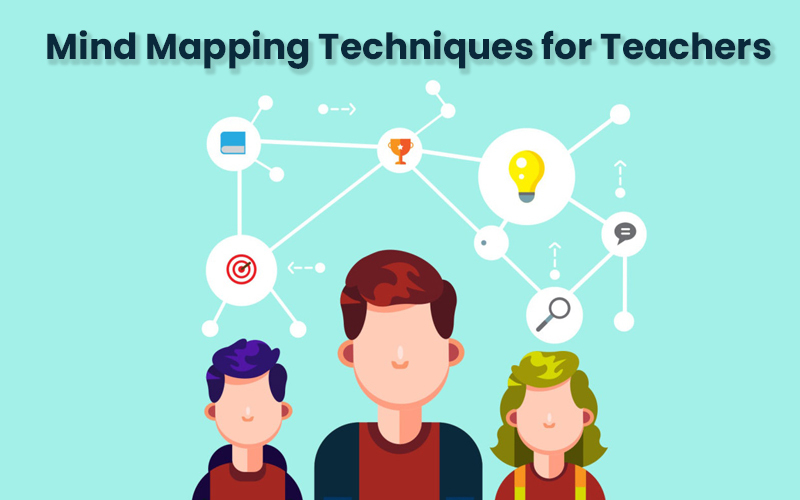Mind Mapping is a useful technique that supports learning, improves information recording, shows how different facts and ideas are related, and enhances creative problem-solving.
When knowledge is presented in a mixture of words and images, students are more likely to recognize and remember it. Mind maps are a great way to enhance long-term memory because they incorporate not only words and pictures, but also colors, a graphical layout, and other mental stimuli.
Teachers have recognized the importance of using Mind Maps to engage students, inspire imagination, and, most importantly, teach students how to learn rather than just memorize material.
Pre-class: Mind Mapping Strategies for Teachers:
Mind Maps provide a concise and visual description of what needs to be covered, whether it’s lesson plans, designing the class curriculum for the school year, or preparing an assignment timeline.
Create an outline of the textbook or learning objectives:
Exam dates and learning objectives can be added to the mind map, as well as worksheets. Then, give your students this map to use as a reference during the semester to figure out what they need to catch up on if they miss a lesson.
Create and manage class projects: Using a mind map to construct a visual description of a project is a brilliant idea. You may provide an overview of the task, deadlines, links to helpful websites, and examples, among other things. Online Mind Maps can be used in class to brainstorm ideas and spark discussions. This will inspire students to engage while also allowing them to fully comprehend a subject and its complexities by allowing them to connect ideas.
Handouts: Online-created mind maps can be conveniently printed and distributed to students. Students should add to the notes in the Mind Map in class.
Presentation: Presentations are a fantastic way to help students develop their communication skills. Students, on the other hand, may quickly become bored when listening to others present. Mind Maps serve as visual information providers that facilitate audience participation in the content being presented. ExamTime, a free online mind mapping application, makes it simple to build an interactive Mind Map.
Learning: Mind Maps are a learning tool that helps students to strengthen knowledge by connecting different areas and deeper into an environment.
Use mind maps to make a difficult task simpler:
Students despise writing essays, so they’ll be overjoyed to learn a new trick that will help the job go more smoothly. One of the best applications of mind mapping is for essay writing.
Students can easily brainstorm ideas for their essay’s subject, gather arguments, quotes, and other details from a variety of sources, and visually outline the layout of their essays using mind maps.
Evaluation: Asking students to share their ideas about a subject in a Mind Map before and after class is a perfect way to use Mind Maps for evaluation. Students will remember the information better, and teachers will be more confident that their students remember and appreciate the material.
Mind map for update:
A quick overview of what you’ve learned so far a few weeks or months after introducing students to a new subject is a great way to deepen students’ comprehension of the content and help them memorize it long-term. Making a revision mind map is a great way to do this.
Summit: Remember that students have grown up with technology more than you have, so introduce it to them and let their imaginations run wild! “The Gegok12 objective is to get students to think and express their ideas critically about sources. By projecting a mind map onto a computer, we study the work in class.”

